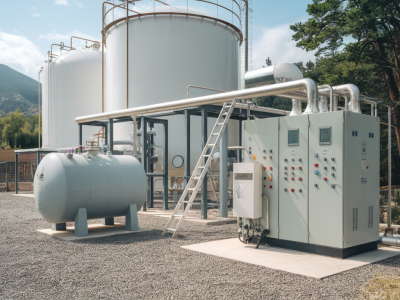
When we talk about renewable energy, wind, solar, and hydro often dominate the conversation. But have you ever stopped to consider another untapped powerhouse of nature—our oceans? Tidal energy, a lesser-known member of the renewable energy family, has enormous potential to contribute to our sustainable future. Yet, it remains largely underappreciated. Today, I want to shine a spotlight on tidal energy, breaking it down in simple terms so you can understand why it might just be the most overlooked renewable energy source out there.
What Exactly Is Tidal Energy?
In essence, tidal energy harnesses the power of the ocean's tides to generate electricity. The moon and the sun's gravitational forces create tides, which are predictable and consistent—a stark contrast to the intermittency of wind and solar energy. This predictability gives tidal energy a unique advantage, making it a reliable cornerstone for future energy grids. Most tidal energy systems work by capturing the flow of water during high and low tides to spin underwater turbines, much like how wind spins turbines to generate power.
Why Is Tidal Energy Such a Game-Changer?
There are several reasons why tidal energy stands out as a renewable energy source:
- Predictability: Tides follow natural and precise cycles, which makes them easier to forecast than wind or solar availability.
- Energy Density: Water is approximately 800 times denser than air, giving tidal energy systems a much higher energy yield compared to wind turbines of the same size.
- Longevity: Tidal structures like barrages and tidal turbines tend to have a longer operational lifespan compared to solar panels and some wind turbines.
Despite these advantages, tidal energy has struggled to hit the mainstream because of the high upfront costs and limited development of suitable sites. But with the current pace of innovation, these barriers are slowly breaking down.
How Does Tidal Energy Work?
Let’s get a bit technical—but don’t worry, I’ll keep it simple! There are two main ways to harness tidal energy:
- Tidal Stream Systems: These use underwater turbines placed in fast-moving tidal streams. As the water flows through, it spins the turbines, generating electricity. Companies like Orbital Marine Power are pioneering in this area with their floating tidal turbines, which are some of the most efficient in the world.
- Tidal Range Systems: These rely on the height difference between high tide and low tide. Barrages are often used, which are like dams built across estuaries. When water flows through the barrage gates, it powers turbines to produce electricity.
Some other technologies, like tidal lagoons, are also being explored, but tidal stream and range systems are currently the most widely used approaches.
Where Are We Seeing Success Stories?
While tidal energy is still in its infancy compared to wind and solar, there are exciting projects happening across the globe:
- Scotland: The MeyGen project, located in the Pentland Firth, is the world’s largest operational tidal energy array. It has the capacity to power thousands of homes and could scale up significantly in the coming years.
- Canada: The Bay of Fundy in Nova Scotia has some of the highest tides in the world, making it an ideal location for tidal energy projects. Developers like Sustainable Marine Energy are testing innovative floating systems in this area.
- France: The Rance Tidal Power Station, which has been operational since 1966, remains one of the most iconic examples of tidal energy. It still serves as a reference point for newer developments worldwide.
Challenges We Need to Overcome
As promising as tidal energy sounds, it’s crucial to acknowledge its challenges:
- High Initial Costs: Building tidal barrages or installing underwater turbines requires significant investment.
- Environmental Impact: While cleaner than fossil fuels, tidal energy projects can disrupt marine ecosystems if not carefully managed.
- Site Limitations: Tidal energy systems are geographically limited to areas with strong tidal activity, such as coastal regions and estuaries.
The good news is that advancements in technologies like floating turbines and improved environmental assessments are making it easier to address these issues. For instance, companies like SIMEC Atlantis Energy are developing modular systems to reduce costs and adapt to different marine environments.
What’s the Future of Tidal Energy?
The future of tidal energy looks promising, but it requires a collaborative push from governments, industries, and communities to unlock its full potential. Here’s what I’d love to see:
- Government Incentives: By providing subsidies and grants, governments can encourage further research and development of tidal technologies.
- Public Awareness: The more people know about tidal energy, the more demand there will be for its adoption.
- Private Investment: With major companies like Siemens and General Electric exploring renewable solutions, there’s hope for increased funding in this space.
As we continue to transition to renewable energy sources, tidal power might just be the underdog that surprises us all. Its unique ability to provide steady and predictable energy makes it an invaluable part of the renewable energy conversation. While it may not yet be the star of the show, tidal energy has the potential to play a lead role in our journey toward a cleaner, greener future.

